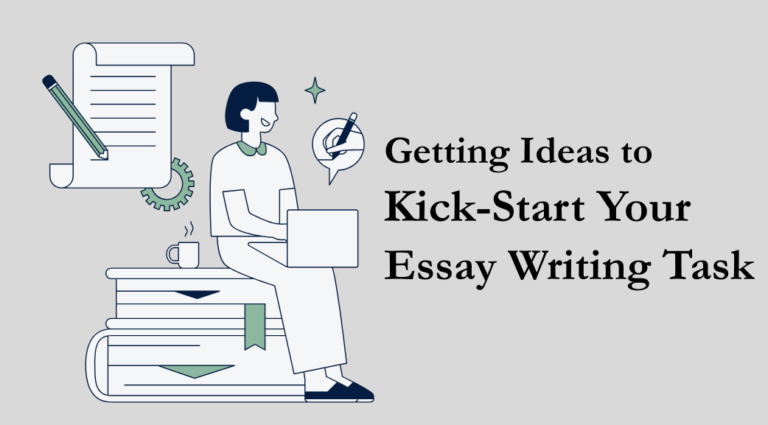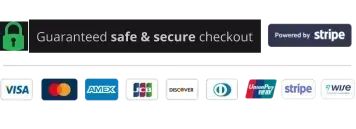So, how long should a cover letter be, and what should it include? Ideally, it should be 250-400 words and no longer than one page. It must cover your qualifications, relevant skills, and enthusiasm for the role, tailored specifically to the job and company.
Ready to write a cover letter that gets noticed? This blog is your ultimate step by step guide through crafting a concise, impactful cover letter. You’ll learn about the ideal structure, formatting tips, common mistakes to avoid, and how to strike the perfect balance between professionalism and personality.
What Is the Ideal Length for a Cover Letter?
Recommended Word Count
What is the ideal level of writing? Try to keep your writing between 250 and 400 words, just enough to showcase your abilities and excitement without overloading the reader. Consider it your pitch: succinct, understandable, and direct.
Page Limit
The golden rule is one page. Any longer and you run the danger of losing the hiring manager’s interest. Use three to five paragraphs and keep everything neat and orderly. It demonstrates your ability to speak concisely and clearly.
Why Length Matters
Think of yourself as a hiring manager who must review fifty applications. Do you want to read a piece of writing? Probably not. A succinct cover letter shows that you are professional and considerate of their time. The objective is to make an impression quickly and effectively.
5 Tips to Keep Your Cover Letter Within One Page
1. Use a Clear Structure
Organise your cover letter into three sections:
- Introduction: Briefly introduce yourself and state the role you’re applying for.
- Body: Highlight relevant skills, experiences, and accomplishments.
- Conclusion: Wrap it up with a call to action, expressing enthusiasm for an interview.
This structure keeps your content focused and easy to follow.
2. Focus on Relevance
Stay true to the experiences and abilities listed in the job description. Only the aspects of your job experience that make you the ideal fit should be disclosed to hiring managers. For instance, if the position calls for leadership, give an example of a time you managed a team well.
3. Write Concisely
Do not use redundant phrases such as “I am writing to express my interest in…” Rather, start with, “I’m thrilled to apply for [Position Name] due to my background in All sentences should be valuable.
4. Format Smartly
Use formatting to save space without sacrificing readability:
- Single-spacing between lines.
- Professional fonts like Arial or Calibri (10-12 point size).
- 1-inch margins to ensure enough white space for a clean look.
This makes your letter visually appealing and easy to read.
5. Edit Ruthlessly
After writing your letter, give it a critical review. Get rid of repetitive sentences, empty words, and unnecessary details. Ask yourself, “Does this sentence help me stand out?” If the answer is no, cut it.
Common Mistakes to Avoid in a Cover Letter
1. Including Irrelevant Information
Your cover letter needs to be relevant and targeted. Don’t include irrelevant occupations, pastimes, or experiences that don’t fit the position you’re looking for. Remain true to the accomplishments and abilities listed in the job description. Your graphic design skills, for instance, are worth emphasising if you’re seeking for a marketing position, but your barista experience probably isn’t.
2. Letting the Letter Exceed One Page
Hiring managers usually don’t have much time. Long cover letters can be intimidating and might not be fully read. Try to keep your message to one page and only contain the most important details. To maintain their interest, keep in mind that little is more.
3. Using Generic Language or Failing to Customise
Stay away from overused expressions like “I’m a team player” or “I’m a hard worker” without giving concrete instances. Referencing the company’s ideals, recent accomplishments, or particular employment needs will help you customise your letter to the position and business. This shows sincere attention and work.
4. Skipping Proofreading
Typographical or grammatical errors are the fastest way to discredit professionalism. Examine your letter carefully before sending it, or check it for errors with Grammarly or another service. Even better, have a mentor or friend proofread it to make sure it is flawless and devoid of errors.
Essential Components of a Cover Letter
1. Header
Start with a professional header that includes your contact information (name, address, phone number, email) and the employer’s details (name, job title, company, and address). This ensures clarity and sets a professional tone.
2. Salutation
Address the hiring manager by name whenever possible. If you don’t know their name, use a professional alternative like “Dear Hiring Manager” or “Dear [Department] Team.” A personalised salutation shows effort and professionalism.
3. Introduction
Grab attention right away. Mention the role you’re applying for and briefly explain why you’re a great fit. For example:
“I’m excited to apply for the Marketing Manager position at XYZ Company, where I can leverage my 5+ years of experience in digital strategy to drive growth.”
4. Body Paragraphs
This is the core of your letter. Break it into two or three paragraphs for clarity:
- Relevant Skills and Achievements: Highlight the skills and accomplishments that directly relate to the job.
Example: “In my previous role, I increased website traffic by 40% through targeted campaigns and innovative content strategies.” - Alignment with the Company’s Needs: Show how your qualifications meet the specific needs or values of the company.
Example: “Your company’s commitment to sustainability aligns with my passion for creating eco-friendly marketing solutions.”
5. Closing Paragraph
End with a confident and enthusiastic call to action. Reiterate your interest in the role and express your eagerness to discuss your qualifications in an interview. For example:
“I would love the opportunity to bring my expertise to XYZ Company and discuss how I can contribute to your team’s success. Thank you for considering my application.”
FAQ
What Does a Good Cover Letter Include?
Your contact details, a customised salutation, and a compelling introduction outlining the position you’re looking for are all components of an effective cover letter. It links your credentials to the demands of the business, emphasises accomplishments and relevant skills in the body paragraphs, and concludes with a strong call to action.
Is 250 Words Enough for a Cover Letter?
Yes, if a cover letter is brief and targeted, 250 words can be plenty. It should showcase your best qualities and provide strong evidence of your suitability for the position. Just make sure you don’t omit any important details.
Is 500 Words Too Long for a Cover Letter?
Yes, a cover letter should not be more than 500 words long. One-page letters, usually between 250 and 400 words, are preferred by hiring supervisors. A lengthy message runs the danger of boring the reader and coming out as rambling or excessively detailed.
Can a Cover Letter Be 5 Paragraphs?
Yes, as long as it stays brief and doesn’t exceed one page, a cover letter can have five paragraphs. It usually consists of an introduction, two to three body paragraphs that highlight your qualifications and abilities, and a conclusion. Making sure each paragraph contributes something worthwhile and remains pertinent to the position is crucial.
Conclusion
You have a chance to highlight your qualifications for the position in your cover letter. Your letter will stand out for all the right reasons if you keep it brief, customise it to the job, and steer clear of frequent errors.
Keep in mind that the greatest cover letters are concise and well-considered. They give the hiring manager a memorable impression, showcase your most pertinent abilities, and fit the needs of the business.
The secret to getting your ideal job may lie in taking the time to write a compelling cover letter. Are you prepared to use these pointers? Get your writing started and make a good first impression!





 " alt="Getting Ideas to Kick-Start Your Essay Writing Task" />
" alt="Getting Ideas to Kick-Start Your Essay Writing Task" />
 " alt="What Is Six Sigma? | Six Sigma Explained for Beginners" />
" alt="What Is Six Sigma? | Six Sigma Explained for Beginners" />
 " alt="How to Become a Teaching Assistant in the UK" />
" alt="How to Become a Teaching Assistant in the UK" />

